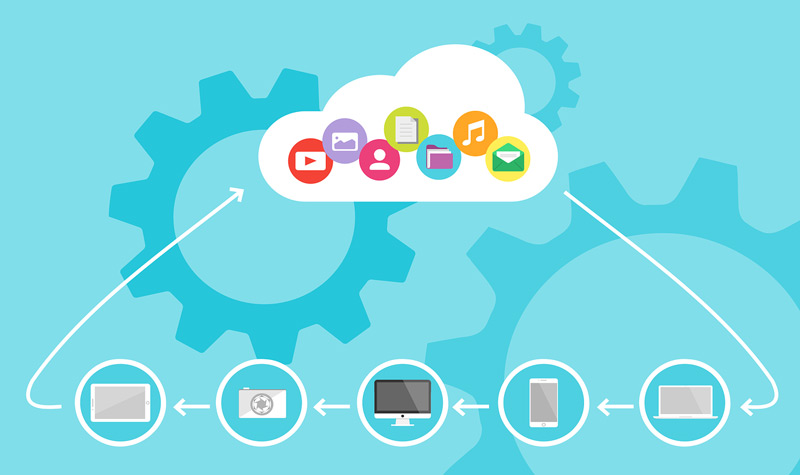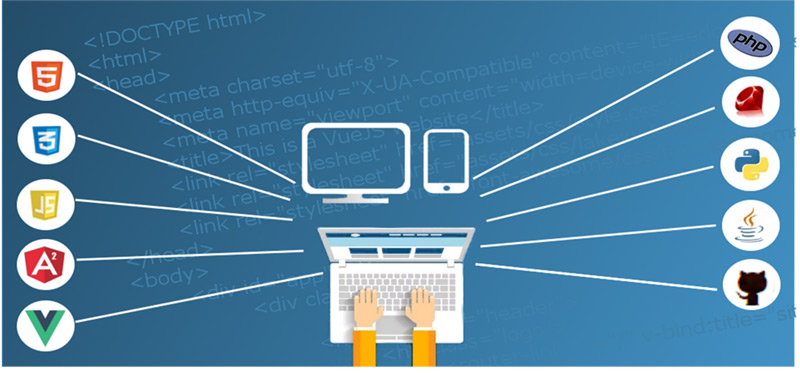
Index:
UPDATED ✅ Do you need to know what client-server architecture is and how it works? ⭐ ENTER HERE ⭐ and discover everything about it ✅ EASY and FAST ✅
Software development is one of the most complex parameters that computing presents. Thanks to the design of these programs, today we can talk and perform tasks that were impossible to do before, from surfing the Internet to sharing a document with another computer that is connected to the same network.
These designs for software have a widely used development model, the Client-Server architecture model.with which parameters are established to be able to make a computer program in a simple and efficient way.
After you read this post you will be able to know what this type of architecture is about, we will also present you the main characteristics of the model and we will analyze all its advantages and disadvantages that it presents.
What is the Client-Server architecture for digital development?

Among the different models that exist to design software is the client-server architecture, which consists of dividing the tasks into two parts. One is oriented to the servers, which are the providers of resources and also of services that they deliver to the second party, which are the so-called clients.
That is Thanks to this model, the development architecture is divided for those who deliver the service or resources and for those who receive or require those products or services.
The great advantage of this model is that it can be centralized, regardless of the size of the network, obtaining information and separating the responsibilities of each party involved.
Thanks to team design the clients are connected to a server which allows the different factors to be centralized available, putting at the service of each one of the clients all the resources they need.
Another important feature of this architecture is that files can be shared by different members of the network as long as they are enabled to do so. Otherwise, these data can be restricted or simply read-only.
What are the main characteristics of the Client-Server model?
Among the different characteristics that the CS model presents, we can mention the most outstanding below:
- The client is the active user that expects and asks the provider for different actions through the available resources.
- You can also work directly with the provider as well as interact with other clients directly through a graphical interface.
- If necessary, the client can have a relationship with more than one provider and its level is always higher than that of the server, becoming “leader”, “teacher” or “father” any of the three denominations can be used.
- The server is the one that receives the request from the recipient, it is also the one that processes the information and delivers it to the recipient through the administration of available resources.
- The provider must have connections with different clients, but cannot with other servers.
- The C/S architecture interacts independently with a single entity or with several at the same time, regardless of whether the server-client relationship is on the same platform or on separate platforms.
- The user is directly related to the PC without having a direct dependency relationship with the server.
- The server may or may not save information on each request made by the recipient.
- There is no other relationship between the client and its supplier if it is not through this means, and it is the request for information through messages with graphical interfaces.
How are servers classified in this digital architecture?

Servers are classified in the S/C architecture as follows:
- Stateless are those providers that do not save information between each request made by the user.
- Statefulare those between request and request of the client can remember the information delivered.
We can also classify the servers according to the functionality of each one, they are:
- Files: When a request is made to the registry
- Database: It is oriented for SQL requirements
- Transactions: They are the servers that work when the user asks them for processes that are inside the server
- Objects: It is related to ORB, where the client requests through a remote method.
- Web: They contact via HTTP
Is it the best architecture? Advantages and disadvantages of the model

Although it is true that the client server model is one of the most used for the design and development of software, there are points that we have to analyze.
We detail them below:
Advantage
The server can control all the accesses and resources that the program can have, as well as eliminate clients that are not authorized to enter. In addition, it can grow both users and providers to a great extent and will not damage the structure of the network.
The maintenance is easysince it has all the functions and structures well defined, so entering it and knowing what things need to be preserved or repaired does not take much time.
It is easy to use, the graphical interfaces are simple and ensure a certain degree of privacy because users cannot be tracked.
Disadvantages
When many clients request to obtain data from the provider, this can collapse being out of operation, so many clients are going to be left without being able to obtain the answers to the requests they made.
The networks peer-to-peer (P2P) are more robustsince its development has fewer errors because the resources are distributed in different nodes of the network, making users never inactive in terms of the responses to their requests.
This type of architecture means that the server has a lot of dependency on both software and hardware.
The users cannot share informationsince all data is generated through requests made to the server.
CS vs Peer Network vs CCC How are they different and which one is better?
The difference is that the C/S architecture works from point to point, that is, there is a direct relationship between the client and the server, with the Client-Queue-Client design architecture the same does not happen.
This method gives all members the category of simple clients, while the server acts as a queue, collecting requests from those nodes. In this way, the process of sharing information is done through the queue, thus generating greater robustness.
What are the most important components of the Client-Server architecture?
The most important components that exist in this client-server architecture are the ones that we are going to define below:
- Net: It is the set of nodes that are connected to each other through software or hardware and that exchange information with each other.
- Client: As we mentioned before, the client is the user or the person who makes the requests and waits for the result report from the client. supplier.
- Server: It is the one that manages the resources available to it and provides the information requested by the user. The passive part of this architecture.
- Protocol: It is the set of rules and indications that the members of the network must have in order to transmit and share information.
- Services: It is the information that the client needs
- Database: This is a set of information that is ordered according to certain characteristics and that, when organized, can be easily accessed.
Internet